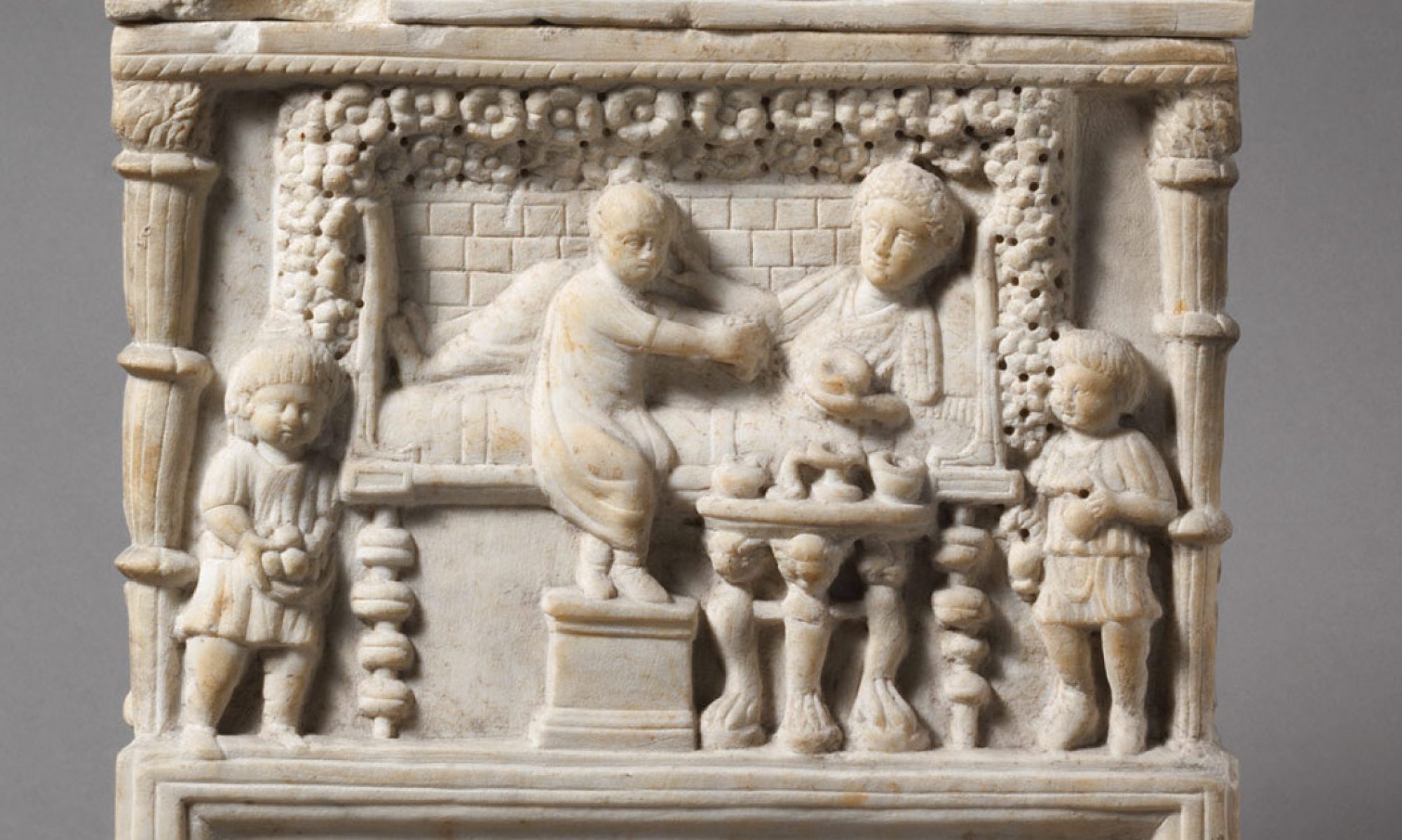Display and Viewing
Cinerary urns stood on display in several different specific ancient funereal contexts that merit greater scholarly attention. This project considers display contexts in terms of how they might have influenced design choices underlying the production of urns.
Many columbaria tombs had brightly decorated walls and ceilings surrounding aedicula where urns were set on display. Whereas smaller rounded niches were used for terracotta ollae, larger rectangular aediculae were more typically reserved for larger marble urns, presumably for the tomb owner or patron who commissioned part of the construction and/or decoration of the tomb.
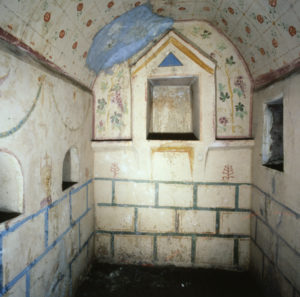
The addition of stucco sculpture and fresco further enhanced the three-dimensional decoration of tombs in which marble cineraria stood on display. The columbarium tomb of the Valerii family, one of the largest underneath St. Peter’s Basilica, presents stucco relief sculpture in a central aedicula with two flanking niches in which marble urns likely stood.
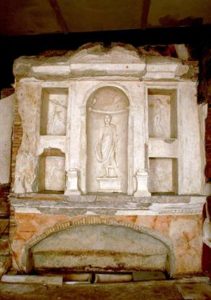
Marble cineraria were not the only marbles or inscribed objects in the columbarium tomb.
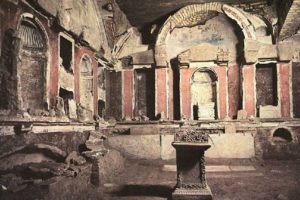
The full sensory environment at funerals and at tombs, whether small, private family tombs or large, communal columbaria tombs, without question also influenced decisions that went into the commissioning and production of marble cineraria.
Click here to explore related ephemera
Even if an urn itself was not made in marble, individuals could choose a marble loculus cover that placed other marble cineraria in visual competition with terra-cotta ollae, as seen by the example of a cover for a scribe named Nothus the columbarium tomb of the Statilii family.

Early publications preserve the display contexts in situ for some marble cineraria. Campana, for example, produced some plates (1852) which set marble urns in relation to altars, ollae, paintings, reliefs, and portraits.
Click here for early plates depicting columbaria tombs and cineraria
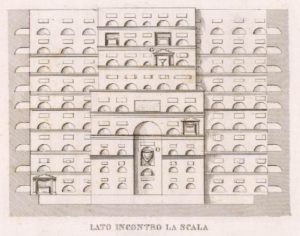
It is also worth considering later reception of how cinerary urns were displayed. The Pre-Raphaelite painter Dante Gabriel Rossetti, for instance, depicts an ancient urn in his painting titled Dis Manibus (Roman Widow). We know from writings by Rossetti and his brother (William Michael) that the ancient urn had actually been acquired. After D.G.’s death, W.M. remained in possession of the urn at least until , but it has not to my knowledge been located since then. The inscription on urn in the painting reads:
DIS MANIBUS
L. AELIO AQUINO
MARITO CARISSIMO
PAPIRIA GEMINA
FECIT
AVE DOMINE VALE DOMINE
The name of L. Aelius Aquinus is likely related to a number of other inscribed marble urns bearing the names of other Aelii, many of whom were freedmen.
The painting captures much of the sentiment that marble cinerary urns seem to have elicited from ancient viewers. The last line of the inscription (Hail, master; farewell, master) may in fact be Rossetti’s addition as they are so rarely seen on other marble urns, although such inscriptions do occur in columbarium tomb inscriptions associated with terra-cotta ollae.
